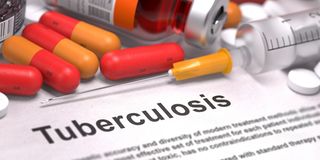With proper treatment, TB is curable

If not treated properly, TB disease can be fatal.
What you need to know:
- Many tuberculosis strains resist the drugs most used to treat the disease. People with active tuberculosis must take many types of medications for months to get rid of the infection and prevent antibiotic resistance.
Every March 24, the world celebrates World Tuberculosis Day which is aimed at building public awareness on the global epidemic of tuberculosis (TB) and efforts to eliminate it.
According to the United States Agency for International Development (USAID), TB is the world’s deadliest infectious disease, affecting about 10 million people and killing 1.5 million globally each year.
Dr Joseph Baluku, a TB specialist at the national TB programme, says it is estimated that more than 80,000 people in Uganda get TB every year. Unfortunately, about 1,000 people do not report to health facilities and are, therefore, not started on treatment.
As dangerous as TB is, it is treatable and curable. In fact, in the past 20 years, more than 63 million lives globally have been saved through TB intervention.
Treatment and resistance
According to Dr Baluku, as soon as one tests positive for TB, they must start taking TB medicine. At Mulago National Referral Hospital, he says, treatment and diagnosis are free.
In Uganda, a course of TB treatment would usually last eight months until recently when it was shortened to six months by the Ministry of health following the introduction of stronger TB drugs.
Resistance
Multi-drug resistance is when a patient becomes unresponsive to anti-TB drugs.
“This occurs as a result of mismanagement when the patient does not take their drugs as instructed by the doctors, says Dr Baluku.
TB resistance also occurs when one receives inadequate TB treatment or if someone gets in contact with another person with a resistant type of TB. As such, people who do not take their medicine as prescribed, people who have ever been treated for TB and health workers are at high risk of getting resistant TB.
When one has resistant TB, they require taking a number of drugs over a period of time (between nine to 21 months). These drugs may be second or even third line drugs, are expensive and may have several side effects. One of the missed opportunities as a country according to Dr Baluku is that there is no long term care plan for TB survivors yet they suffer long term complications including lung diseases, stroke, cancer, heart attacks, mental health disorders and long term side effects of TB medicines.
Cost
In Uganda, it is important to note that a significant cost of TB treatment is borne by the patient.
“It is estimated that people with ‘‘normal’’ TB spend about US$396 (about Shs1.4m) on treatment while those with resistant TB spend up to US$ 3722 (about Shs13.4),’’ Dr Baluku says.
TB continues to receive very dismal funding from the government according to Dr Baluku, which significantly affects as many as 53 percent of people with TB who suffer high costs.
“Such individuals need to sell household items to meet the cost for TB care. Providing cash incentives and enablers to all TB patients could help mitigate this,” he says.
Impact of Covid-19
This year, according to Dr Henry G Mwebesa, the director general Health Services, the global Covid-19 pandemic restrictions and related challenges disrupted service delivery, access to diagnosis and care, infrastructure and human resources which resulted in more missed cases and mortality from TB.
During the lockdown, people who had both TB and Covid-19 were more likely to die than those with only TB because of their compromised immune system. There was a 17 percent decline in the number of TB cases reported in the months after the lockdown.
“This was due to limited access to TB services especially in urban areas. Also, people with TB symptoms were stigmatized since these symptoms resemble Covid-19 symptoms,” Dr Baluku says.
Precautions
When you have TB, it is important to avoid contact with people because it is transmitted through air. At home, a TB patient should have a separate room with proper ventilation to avoid infecting the rest of the family members.
According to David Kaliisa, a community supervisor for TB patients at Mulago National Referral Hospital, TB patients are advised to have containers where they spit since spitting everywhere aids spreading of the bacteria to other people.
“The container must have a tightly fitting cover/lid and contain jik to disinfect. They can always use jik to clean it and thereafter re-use,” he says.
Kaliisa also remarks that proper hygiene is important for people with TB. They should have clean handkerchiefs that should not be thrown anyhow or children may accidentally use them and contract the bacteria as well.
He also warns against sharing cups with a TB patient and encourages taking anyone with signs of the disease to the hospital for a checkup as soon as possible.
What to do?
● Stay at your home and avoid contact with others
● Wear a mask that covers your nose and mouth if you must go to medical appointments and when health care providers come to your home.
● Cover your mouth and nose with a tissue when you cough, sneeze or laugh.
● Take your TB medicines as directed, eat healthy foods, and get plenty of rest.
● Isolate yourself in a well-ventilated room.
● Do not have visitors, especially children and people with weak immune systems.
● Do not use buses, trains, taxis or and public places.




